The current Mac Pro was introduced in December 2013 to mixed reactions. Yes, it’s beautifully miminalistic and it was very powerful by 2013 standards, but it lacked hard drive bays and expansion slots, two features that generally define a professional level computer.
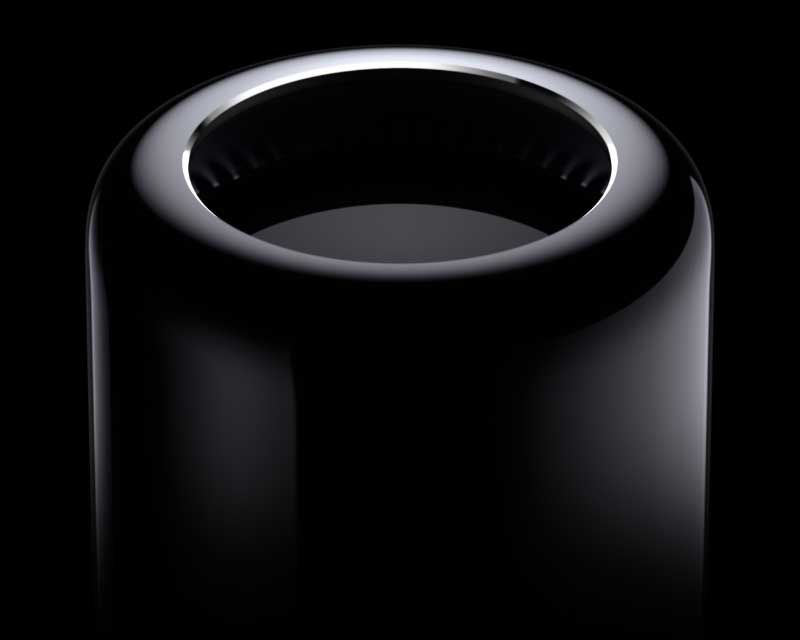 Well Apple has finally seen the light. With the introduction of the 2013 Mac Pro – the “Mac in a can” – sales of the 2012 Mac Pro – itself a speed bumped version of the 2010 model – took off. Pros and power users wanted their expansion slots and drive bays; they didn’t want to be limited to adding external devices with their rats nest of wires. They wanted internal expansion options.
Well Apple has finally seen the light. With the introduction of the 2013 Mac Pro – the “Mac in a can” – sales of the 2012 Mac Pro – itself a speed bumped version of the 2010 model – took off. Pros and power users wanted their expansion slots and drive bays; they didn’t want to be limited to adding external devices with their rats nest of wires. They wanted internal expansion options.
And we can expect Apple to deliver that again sometime in 2018.
 I hope Apple will seriously reconsider the pros and cons of the original Mac Pro design and the current design in coming up with something uniquely Apple that will immediately be seen as a pro level computer. Something other than the cheese grater tower design that goes back to the original Power Mac G5 unleashed in June 2003.
I hope Apple will seriously reconsider the pros and cons of the original Mac Pro design and the current design in coming up with something uniquely Apple that will immediately be seen as a pro level computer. Something other than the cheese grater tower design that goes back to the original Power Mac G5 unleashed in June 2003.
Historical Possibilities
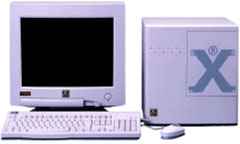 One of the less know authorized Mac clones was the MaxxBoxx, which was nearly cube-shaped with 10 drive bays. (The MaxxBoxx was approximately 15″ tall, 12″ wide, and 16″ deep, so not quite a cube.) For those who work with discs or burn them, something with one or two drive bays for a Blu-ray or DVD writer would be a real blessing. For others, having room for a RAID hard drive array with perhaps four 3.5″ drives – the value and capacity champions, and often the fastest hard drive options – would be desirable.
One of the less know authorized Mac clones was the MaxxBoxx, which was nearly cube-shaped with 10 drive bays. (The MaxxBoxx was approximately 15″ tall, 12″ wide, and 16″ deep, so not quite a cube.) For those who work with discs or burn them, something with one or two drive bays for a Blu-ray or DVD writer would be a real blessing. For others, having room for a RAID hard drive array with perhaps four 3.5″ drives – the value and capacity champions, and often the fastest hard drive options – would be desirable.
 Then there is the original Cube, the one from NeXT. The black magnesium enclosure was 12″ wide, 12″ tall, and 12″ deep, making a stunning statement just sitting there. Apple could do far worse than copy NeXT’s elegant design.
Then there is the original Cube, the one from NeXT. The black magnesium enclosure was 12″ wide, 12″ tall, and 12″ deep, making a stunning statement just sitting there. Apple could do far worse than copy NeXT’s elegant design.
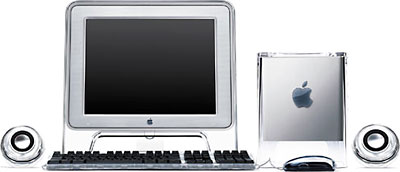 One other Cube comes to mind, and it was not designed for the pro market. The Power Mac G4 Cube was a beautiful piece of hardware designed to look good on an executive’s desk. It was a work of art, but it lacked the drive bays and expansion slots that pros need. On the plus side, it was virtually silent with its passive cooling system – all you heard was the hum of the hard drive. Replace that with an SSD, and you have silent computing, but also very dated technology.
One other Cube comes to mind, and it was not designed for the pro market. The Power Mac G4 Cube was a beautiful piece of hardware designed to look good on an executive’s desk. It was a work of art, but it lacked the drive bays and expansion slots that pros need. On the plus side, it was virtually silent with its passive cooling system – all you heard was the hum of the hard drive. Replace that with an SSD, and you have silent computing, but also very dated technology.
The Cube was 7.7″ wide and 7.7″ deep, but 9.8″ tall in its acrylic enclosure. The computer part was indeed a cube, but there were too many design compromises. One optical bay. One hard drive bay. One AGP slot for a video card. No other expansion slots. And to add insult to injury, all of the ports were on the bottom of the computer, so you had to pick up or tip over the Cube to plug in or unplug a USB or FireWire device.
Looking Forward
There are certain applications where hard drives are superior to SSDs, busy databases being one of them. While reads and writes are faster with an SSD, they have a limited number of write cycles before data corruption sets in. Hard drives have an almost limitless number of write cycles, making them a much better choice for databases and other programs that are constantly writing to the drive.
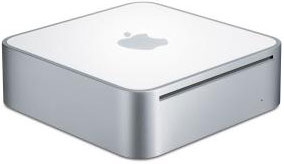 At the same time, hard drives are getting physically smaller. When Apple introduced the Mac II in early 1987 – 30 years ago – it used a 5.25″ hard drive. Future desktop Macs standardized on the 3.5″ hard drive for ages. It wasn’t until the 2004 Mac mini that Apple built a desktop computer around a 2.5″ hard drive, and that made the Mac mini more expensive and slower than if it had been a bit bigger and used a 3.5″ hard drive. Every Mac mini since then has used a 2.5″ hard drive – or an SSD. The early Mac mini models had a 6.5″ x 6.5″ footprint and were 2″ tall.
At the same time, hard drives are getting physically smaller. When Apple introduced the Mac II in early 1987 – 30 years ago – it used a 5.25″ hard drive. Future desktop Macs standardized on the 3.5″ hard drive for ages. It wasn’t until the 2004 Mac mini that Apple built a desktop computer around a 2.5″ hard drive, and that made the Mac mini more expensive and slower than if it had been a bit bigger and used a 3.5″ hard drive. Every Mac mini since then has used a 2.5″ hard drive – or an SSD. The early Mac mini models had a 6.5″ x 6.5″ footprint and were 2″ tall.
Coincidentally, the Power Mac G4 Cube has the same 7.7″ by 7.7″ footprint as the current Mac mini design, which has been in use since 2010. The new Mac mini design is just 1.4″ tall.
Design Ideas
I love the Mac mini and use a Mid 2007 Mini as my primary desktop machine, still using good old Mac OS X 10.6 Snow Leopard, which is unfortunately becoming increasingly dated for some uses. (For the record, I am using a Late 2008 Aluminum MacBook as my primary computer, now connected to Apple’s 20″ Aluminum Cinema Display. I have OS X 10.9 Mavericks and 10.11 El Capitan installed and prefer the look of Mavericks but the integration with my iPhone offered by El Capitan.)

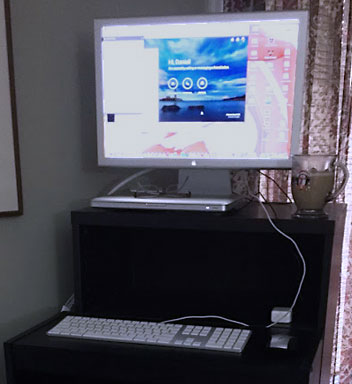
I love the design of older Macs with optical drive bays, because that gives you the option of pulling the optical drive and mounting a second hard drive or SSD. I’ve done that with my MacBook, and if I ever need to run Snow Leopard on it, it’s on the hard drive. Everything else is on its SSD.
How Many Drive Bays?
I don’t know if we’re quite there yet, but we are approaching the point where 2.5″ hard drives offer the speed and reliability of 3.5″ drives without the huge difference in price of the past. Creating a speed demon 4-drive RAID array with 2.5″ hard drives might be just the thing for pros, which could help Apple reduce the size of the next generation Mac Pro. For those who need the higher capacity of 3.5″ drives, there are always external enclosures. It’s probably not a big enough segment of the pro market for Apple to address.
There should be at least two sockets for Apple’s super fast SSDs. And two slimline drive bays for SuperDrives or Blu-ray drives.
All of this could be in something as narrow as the early Mac mini – just 6.5″ wide.
How Many Expansion Slots?
You can never have too many expansion slots, but most users never even use one. Going after the pro market, I would peg three as the absolute minimum. At least one graphics card. Beyond that, it’s hard to predict, and external graphics processors are becoming a real alternative to internal ones.
How Big or Small?
Once you add full-sized PCIe cards, you’re probably going to a design about 8″ wide, like the Mac Pro and Power Mac G5. You will want room for at least two multi-core CPUs. And you will need a power supply that can support four 2.5″ hard drives, optical drives, and whatever CPU, amount of memory, and expansion cards are installed. One way to reduce the size of the computer would be to use an external power supply, as laptops do and the Mac mini once did. That also reduces the amount of heat generated by the computer itself. Something for Apple to think about.
Passive cooling would be quiet and very nice, but there’s the trade-off between power and heat. For those who need faster processors with more cores, there will be more cooling issues. For lower level processors, passive cooling could be an option.
I’m guessing something 8″ wide, 18″ deep to accommodate full sized expansion cards, and perhaps 10-12″ tall, a bit more height than the current Mac Pro but a lot less than earlier designs.
How Will It Impact the Market?
With the release of the new Mac Pro design in 2013, Apple grew the market for used Power Macs among users who wanted internal hard drives, internal optical drives, internal expansion slots – basically internal expansion instead of a collection of external devices with their clutter of cables.
Apple understood that with the original iMac – power cord, modem cord, plus USB for the mouse and keyboard. With WiFi and Bluetooth, you can now do the same thing with a single cord – two if you have an external display.
The 2018 Mac Pro will seriously impact the used Mac Pro market, because after 4+ years, Apple will finally offer a comparable design. Those of us who would love a Mac Pro will be able to afford the cast-offs of pros buying the new machine. Except for the crazy power draw, I would really love to have one myself someday.
The Alternative
The Mac Pro in a can is beautiful and innovative, but what if Apple redesigned it as more of a middle line of product, between consumer and pro. Exactly the same spot that the Power Mac G4 Cube was meant to inhabit. Make a shorter version without expensive graphics cards. Use integrated graphics and let those who need more graphics power buy an external GPU.
The Mac Semi-Pro could be 4-6″ tall with the same footprint as the current Mac Pro. I think there’s a market for a midrange Mac without a built-in display, an alternative to the iMac for users who want more than a Mac mini but less than a Mac Pro.
Time will tell what Apple comes up with. I hope most of these ideas will see their way into the next Mac Pro.
Keywords: #macpro #2013macpro #2018macpro
Searchword: 2018macpro
Short link: https://goo.gl/N89iNj

